Pesticide usage in Scotland: arable crops and potato stores 2016
This publication presents information from a survey of pesticide use on arable crops and potato stores in Scotland during 2016.
This document is part of a collection
Table 52 Summary of responses to risk management questions - 2016
| Risk management activity |
Percentage yes response |
|---|---|
| Crop rotation |
88 |
| Soil testing |
96 |
| Cultivation of seed bed |
93 |
| Cultivations at sowing |
44 |
| Varietal or seed choice |
93 |
| Catch and cover cropping |
27 |
| Protection or enhancement of beneficial organism populations |
88 |
| Any risk management activity |
100 |
Figure 58 Types of soil testing recorded (percentage of respondents) - 2016
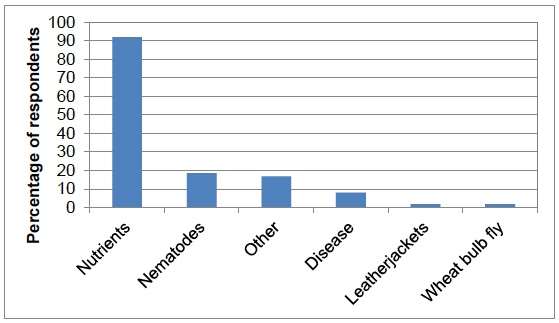
Note: 'other' includes pH, sulphur and eelworm
Figure 59 Methods of cultivating seed bed to reduce pest risk (percentage of respondents) - 2016
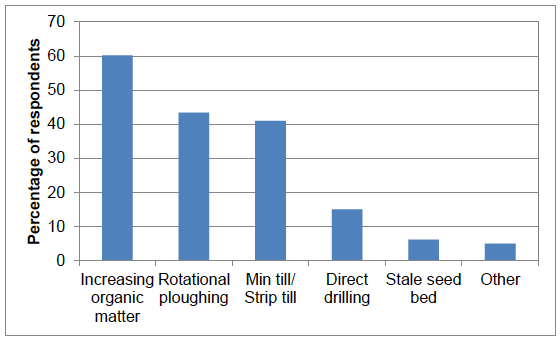
Note: 'other' includes considering pest management when planning irrigation, using a straw rake and shallow cultivations or rolling to control slugs
Figure 60 Methods of cultivating at sowing to reduce pest risk (percentage of respondents) - 2016
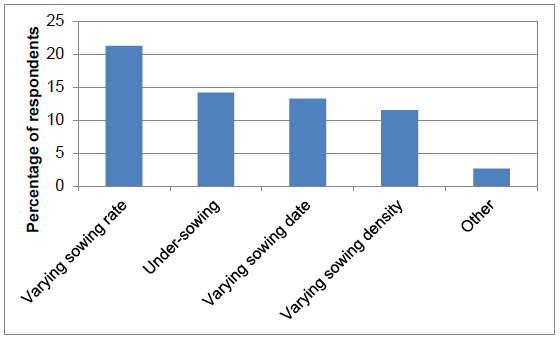
Note: 'other' includes drilling headlands after crop to reduce slugs, considering pest management when planning nutrition and sowing deeper when crows are a problem
Figure 61 Variety and seed choice to reduce pest risk (percentage of respondents) - 2016
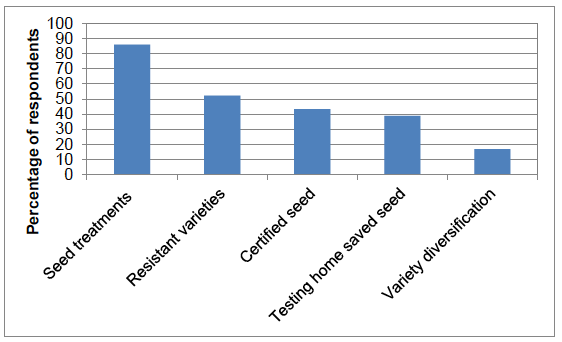
Figure 62 Reasons for use of catch and cover crops (percentage of respondents) - 2016
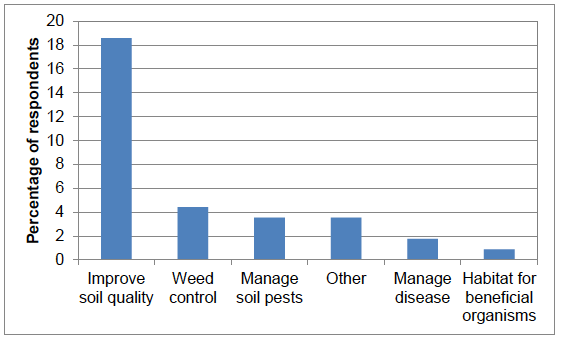
Note: 'other includes EFA catch crop, companion crop and stopping runoff from soil
Figure 63 Methods for protecting and enhancing beneficial organism populations (percentage of respondents) - 2016
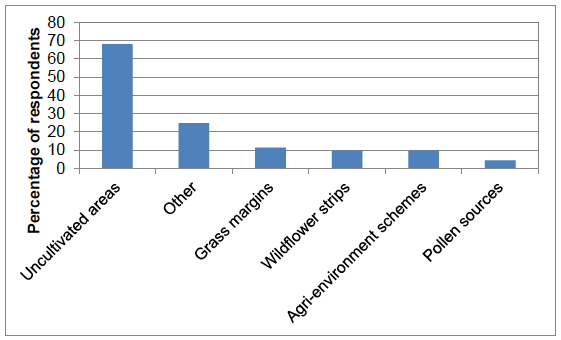
Note: 'other' includes beetle banks, hedging, ponds and wetland areas
Pest monitoring
In IPM, pests are monitored to determine whether control is economically justified and to effectively target control options. IPM programs aim to monitor and identify pests, so that appropriate control decisions can be made in conjunction with action thresholds. Table 53 presents an overview of the pest monitoring measures reportedly adopted by the growers surveyed. All of the growers sampled implemented one or more pest monitoring activity.
Ninety nine per cent of farmers stated that they regularly monitored crop growth stages and all growers monitored and identified pests on their crops. Most farmers (68 per cent) also used action thresholds when monitoring pest populations. Pest monitoring was conducted primarily by BASIS agronomist inspection (97 per cent) and self-inspection (50 per cent). In addition, some farmers used trapping, risk warnings, technical bulletins and press articles to assess pest pressure ( Figure 64).
Fifty eight per cent of farmers also reported that they used specialist diagnostics when dealing with pests that were more problematic to identify or monitor. Around a third (35 per cent) used tissue testing to monitor nutritional deficiencies, 34 per cent used field or pest mapping and 11 per cent used clinic services to identify unknown pests ( Figure 65).
Contact
There is a problem
Thanks for your feedback